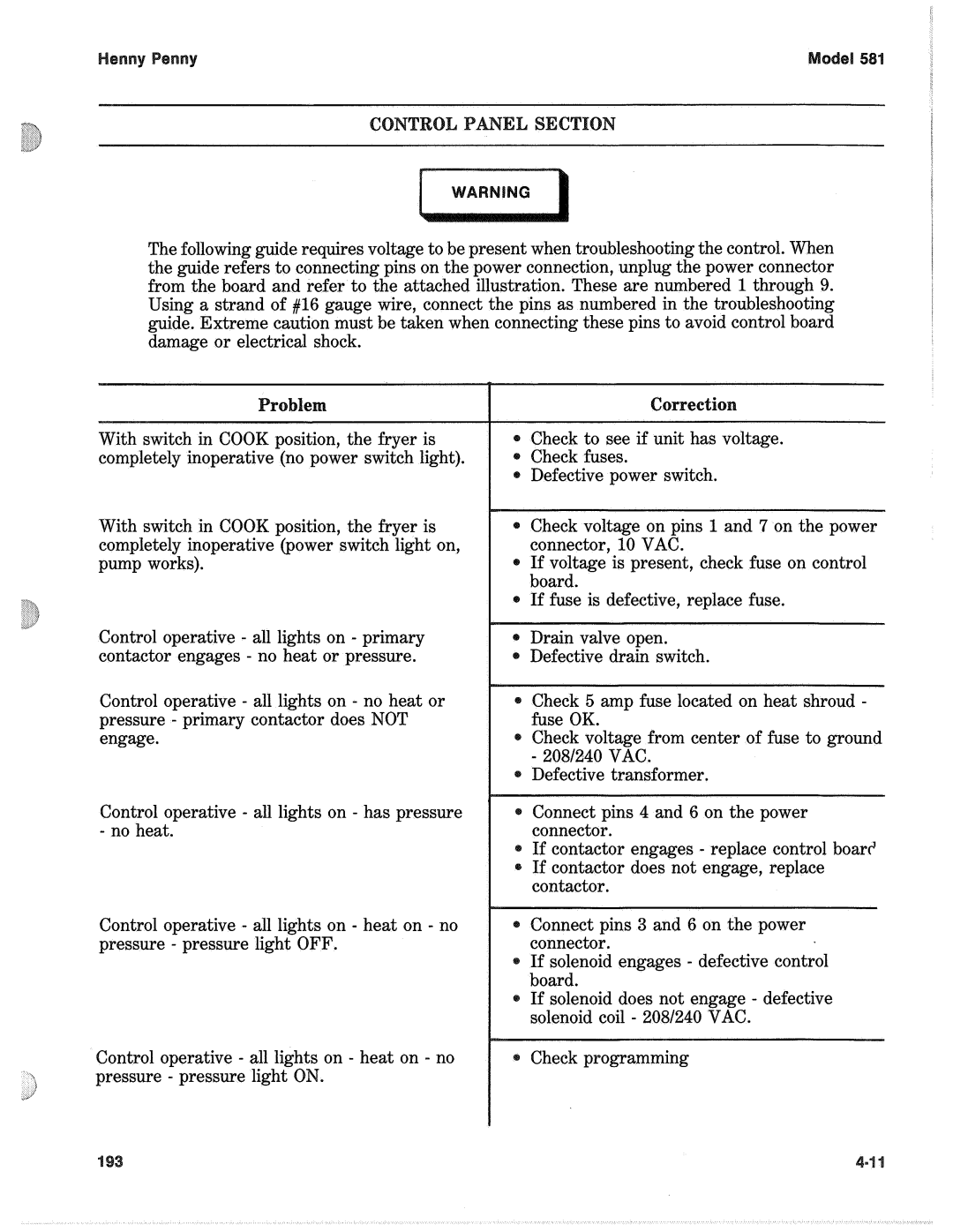581 specifications
Henny Penny 581 is a state-of-the-art commercial cooking appliance designed for the foodservice industry, specially tailored to meet the demands of high-volume kitchens. This pressure fryer boasts several impressive features that enhance its functionality and efficiency.At the core of Henny Penny 581 is its innovative cooking technology that combines pressure cooking with frying. This dual functionality allows for faster cooking times while also ensuring that food retains its moisture and tenderness. The pressure frying process seals in juices, resulting in crispy exteriors and succulent interiors, which are crucial for dishes like chicken, fish, and doughnuts.
One of the main characteristics of the Henny Penny 581 is its robust construction, designed to withstand the rigors of daily use in bustling kitchens. Built with high-quality materials, this fryer is durable and capable of enduring high-temperature operations. The appliance is engineered for safety, featuring an automatic lid locking system that prevents opening during the cooking process, thereby minimizing the risk of accidents.
Additionally, the Henny Penny 581 incorporates advanced temperature control technology, ensuring precise cooking results every time. Operators can easily set and monitor cooking temperatures through an intuitive digital interface that simplifies the frying process. This feature not only enhances consistency but also reduces the chances of overcooking or undercooking food.
Energy efficiency is another standout characteristic of the Henny Penny 581. With its well-insulated tank and advanced heat distribution system, this fryer minimizes energy consumption while maximizing output, making it an environmentally friendly choice for commercial kitchens.
Maintenance of the Henny Penny 581 is straightforward, thanks to its user-friendly design. The fryer comes with a removable oil filtration system that simplifies the cleaning process and extends the life of the frying oil, ultimately leading to cost savings for the operator.
In summary, Henny Penny 581 is an advanced pressure fryer that combines efficiency with performance, making it an invaluable asset for any high-volume foodservice operation. Its impressive features, safety mechanisms, energy efficiency, and ease of maintenance make it a preferred choice among chefs looking to elevate their cooking processes while ensuring top-quality results.

